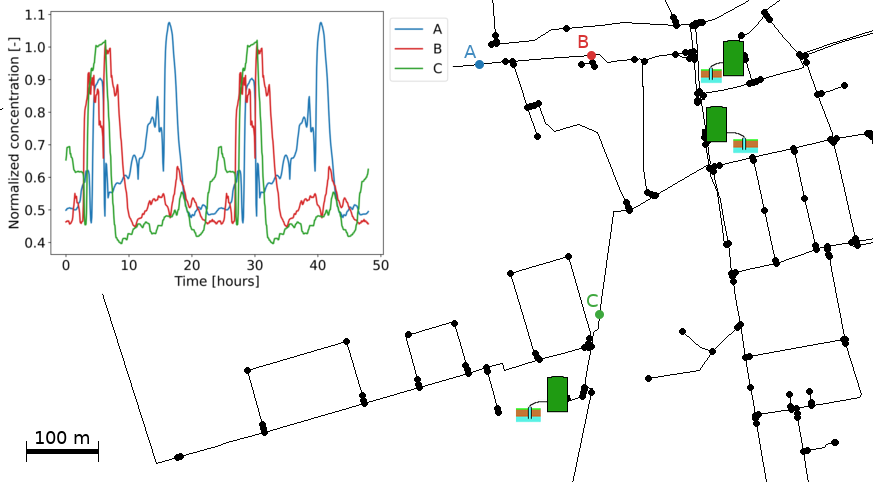Context. Recent progress in on-line microbiological measurement instruments has allowed real-time monitoring of drinking water distribution systems (DWDSs), uncovering microbiological dynamics and empowering the development of early-warning systems.
Gap. While these instruments have become more common, several criticalities remain when conducting monitoring campaigns. For example, as most previous campaigns focus on single locations, microbiological dynamics and their variability within DWDSs are not well characterized, hampering the choice of effective sampling locations and timings. Furthermore, the identification of microbiological events, which could imply aesthetic, operational or sanitary issues, is confounded by the baseline dynamicity of bacterial concentration and communities in DWDSs.
Aim. The goal of this work is, first, to highlight several criticalities which can affect DWDS microbiological monitoring campaigns and, secondly, to propose and evaluate possible improvement strategies.
Methods. DWDS bacterial dynamics were modelled through EPANET simulations including both bulk-water and attached bacteria. Such simulations were then used to test the dynamics variability, the effectiveness of sampling strategies to identify quality variations.
Findings. Water transport through DWDSs can affect microbiological quality dynamics, limiting the generalization of the pattern observed in one monitoring point to other locations, especially when multiple water sources and/or tanks are present (Figure 1). In addition, common summary statistics (i.e. mean, variance) fail to properly identify changes, highlighting the need for more sophisticated multivariate approaches. Furthermore, we stress the importance of the selection of sampling locations and timing to ensure the identification of relevant events.
Utilization. Our results will help i) researchers in developing effective monitoring schemes and data elaboration algorithms to support early-warning systems, and ii) water utilities to design improved sampling campaigns to detect microbiological events in DWDSs based on optimal online sensors allocation.
 Figure 1. Dynamics of bacterial concentrations in 3 locations in a DWDS served by 3 treatment plants with identical bacterial release.
Figure 1. Dynamics of bacterial concentrations in 3 locations in a DWDS served by 3 treatment plants with identical bacterial release.